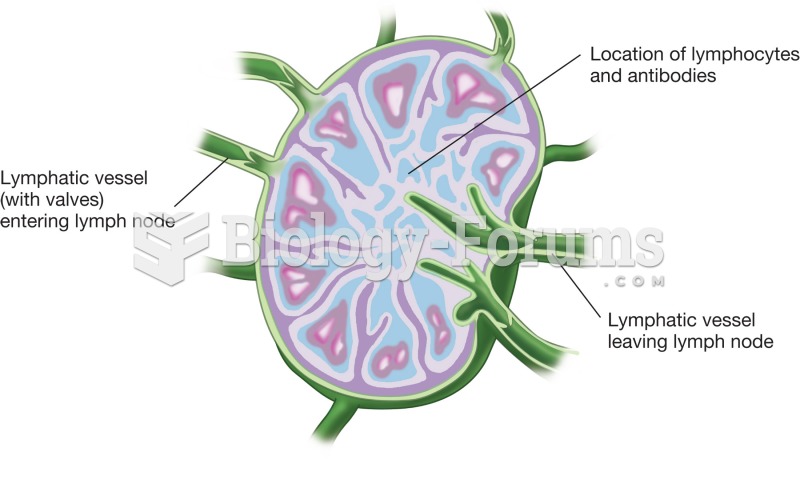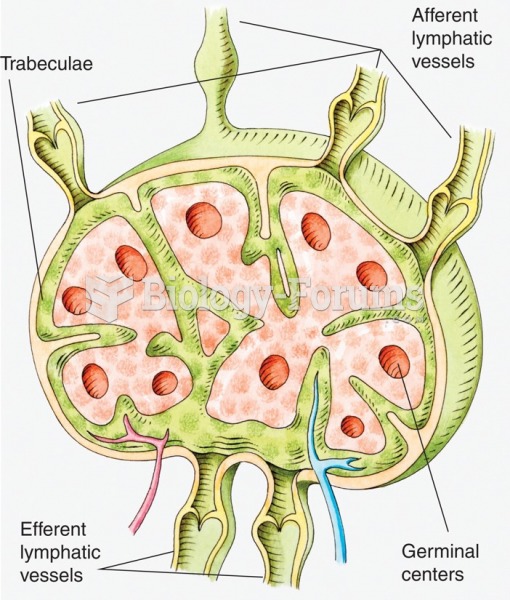Answer to Question 1
Correct Answer: 2
Rationale 1: Much of the postmastectomy swelling in the arm is due to lymph. The body contains a substantial amount of lymph fluid.
Rationale 2: As much as 3 liters of fluid per day travel through the lymphatic vessels.
Rationale 3: Lymph fluid comes from the blood, but is not part of the blood.
Rationale 4: While some differences in amount of lymph fluid do occur, it is inaccurate to say that some people have very little.
Global Rationale: Lymph fluid is created when fluid leaves the capillaries due to osmotic forces and high pressure in the capillaries. This fluid enters blind-ended lymphatic vessels and slowly travels on its journey through the lymphatic system. As much as 3 liters of fluid per day travel through the highly branched lymphatic vessel network to eventually return to the cardiovascular circulation. Much of the postmastectomy swelling in the arm is due to lymph. The body contains a substantial amount of lymph fluid. Lymph fluid comes from the blood, but is not part of the blood. While some differences in amount of lymph fluid do occur, it is inaccurate to say that some people have very little.
Answer to Question 2
Correct Answer: 1
Rationale 1: Normal bacteria and fungi on the skin compete with pathogens for space and nutrients.
Rationale 2: Normal flora on the skin do not phagocytize pathogens.
Rationale 3: Normal flora on the skin do not secrete killer substances.
Rationale 4: Normal flora do not change the pH of the skin.
Global Rationale: The skin is also colonized with a variety of bacteria and fungi that are normally harmless to the host. Microbiota (flora) compete with pathogens for space and nutrients, thus creating an unfavorable growth environment for harmful organisms. However, should the skin become broken or compromised by needlesticks or catheters, some species of normal flora may become pathogenic. Normal flora do not phagocytize pathogens, secrete killer substances, or change the pH of the skin.







